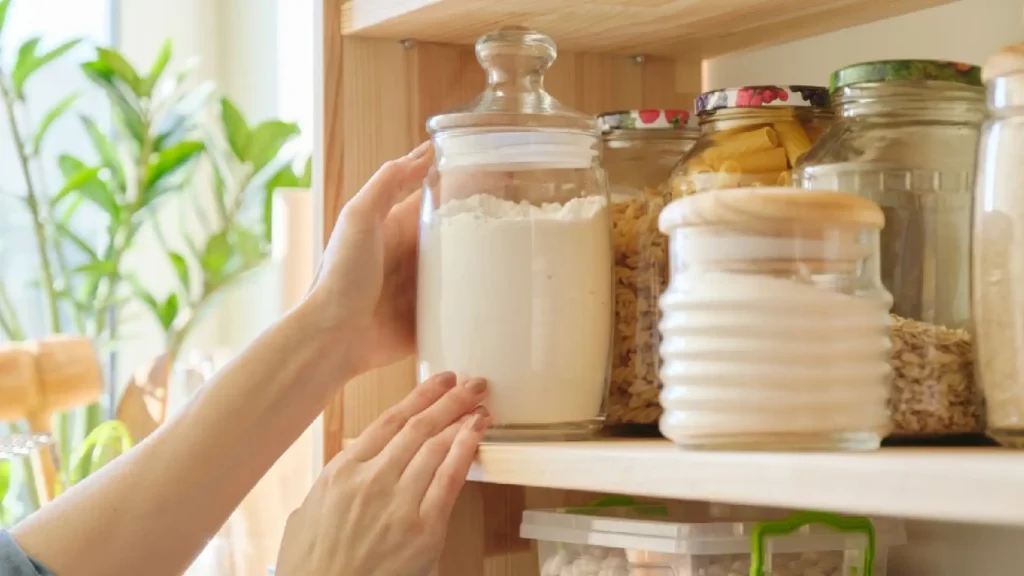All-purpose flour, the trusty companion in countless baking adventures, deserves a place of honor on our kitchen shelves. From delicate pastries to crusty loaves of bread, its versatility is unmatched. But flour doesn’t have an eternal lifespan unlike canned goods or frozen vegetables. How long does all purpose flour last before it loses its magic touch? This guide unveils the secrets of all-purpose flour shelf life, exploring the factors that influence its longevity and offering tips for optimal storage.
The Floury Facts: How Long Does All Purpose Flour Last
Before we delve into shelf life, let’s understand the hero of our baking endeavors: all-purpose flour. It’s a masterful blend of two wheat flours, each playing a vital role:
- Hard Wheat Flour: Rich in gluten, this flour provides structure and elasticity, the backbone of breads and chewy cookies.
- Soft Wheat Flour: Lower in gluten, it contributes tenderness and a delightful crumb to cakes, pastries, and other delicate treats.
This harmonious blend creates a versatile flour that adapts to a wide range of baking applications.
The Shelf Life Saga: Unveiling the Factors at Play
Several factors influence how long all-purpose flour lasts. Understanding these factors empowers you to store your flour optimally and maximize its shelf life.
Milling and Processing:
- Commercially Milled Flour: Mass-produced flour often contains bleaching agents and preservatives that extend shelf life. These flours typically last longer than unbleached or whole wheat varieties.
- Unbleached Flour: Free from bleaching agents, unbleached flour might have a slightly shorter shelf life compared to commercially milled flour.
- Whole Wheat Flour: Packed with the bran and germ of the wheat kernel, whole wheat flour has a shorter shelf life than all-purpose flour. These natural oils can become rancid over time.
Storage Conditions:
- Temperature: Heat accelerates the breakdown of fats and starches in flour, shortening its shelf life. Aim for a cool, dry place between 50°F (10°C) and 70°F (21°C). Avoid storing flour near heat sources like ovens or stoves.
- Light: Direct sunlight can degrade the quality of flour over time. Choose an opaque container or a cool, dark pantry for optimal storage.
- Moisture: Moisture is the nemesis of flour! It can promote mold growth and lead to undesirable clumping. Keep your flour container tightly sealed to prevent moisture from entering.
Packaging Matters:
The type of container you choose can significantly impact how long your all-purpose flour lasts. Here’s a breakdown of common packaging options:
- Paper Bags: The least ideal for long-term storage, paper bags are not airtight and allow moisture and air to penetrate the flour.
- Resealable Plastic Bags: Offering some protection from moisture and air, these bags are a better option than paper, but might not be completely airtight.
- Airtight Containers: The champion of long-term storage! Opt for airtight containers made from glass, metal, or food-grade plastic.

So, How Long Does All-purpose Flour Last?
Here’s a general guideline for all-purpose flour shelf life, keeping in mind the factors discussed above:
- Commercially Milled Flour (Unopened): Up to 1 year in a cool, dry pantry or up to 2 years if stored in the refrigerator.
- Commercially Milled Flour (Opened): Up to 6 months in a cool, dry pantry or up to 1 year if stored in the refrigerator in an airtight container.
- Unbleached Flour (Unopened): Up to 6 months in a cool, dry pantry or up to 1 year if stored in the refrigerator.
- Whole Wheat Flour (Unopened): Up to 3 months in a cool, dry pantry or up to 6 months if stored in the freezer in an airtight container.
Important Note: These are just estimates. Always check the “best by” date on the flour package, and use your senses to judge freshness. Don’t hesitate to toss flour that seems off, especially if you’re unsure about its quality.
Signs Your Flour Might Be Past Its Prime
How can you tell if your trusty bag of flour is still fit for baking adventures? Here are some signs that your all-purpose flour might be past its prime:
- Clumps: Fresh flour should be loose and free-flowing. Clumping can cause moisture exposure or spoilage.
- Discoloration: Fresh flour should be white or slightly off-white. A yellowish tint can indicate age or rancidity
Conclusion
By understanding the factors that influence shelf life and following proper storage techniques, you can extend the life of your all-purpose flour and ensure it delivers its best in every baking project. Remember, fresh flour translates to fresher-tasting baked goods. So, store your flour wisely, and get ready to whip up some delightful creations!
FAQs
Que: Can I use expired flour?
- Ans: Maybe. Check for spoilage signs (clumps, color change, bad odor). If it seems okay, it might work, but the baking results might not be ideal. When unsure, toss it!
Que: What is the best way to store flour?
- Ans: Airtight container (glass, metal, food-grade plastic) in a cool, dry place away from sunlight and heat. Low on pantry space? Store a smaller amount for everyday use and keep the bulk in the fridge or freezer.
Que: Is the fridge or freezer okay for flour?
- Ans: Yes! Extends shelf life, especially once opened. Fridge – up to 1 year. Freezer – up to 2 years. Use airtight containers to prevent moisture absorption. Let flour reach room temperature before using it to avoid clumps in your baked goods.
Que: How do you tell if it’s whole wheat flour?
- Ans: Look and smell! Whole wheat flour is coarser, has a nutty aroma, and is light brown due to bran. All-purpose flour is finer, has no smell, and is white or off-white.
Que: What should you do with old flour?
- Ans: Don’t toss it yet! Repurpose it:
- Make playdough for kids.
- Thicken soups or stews.
- Create a flour paste for cleaning or crafts.
- Improve traction on icy driveways or sidewalks.


